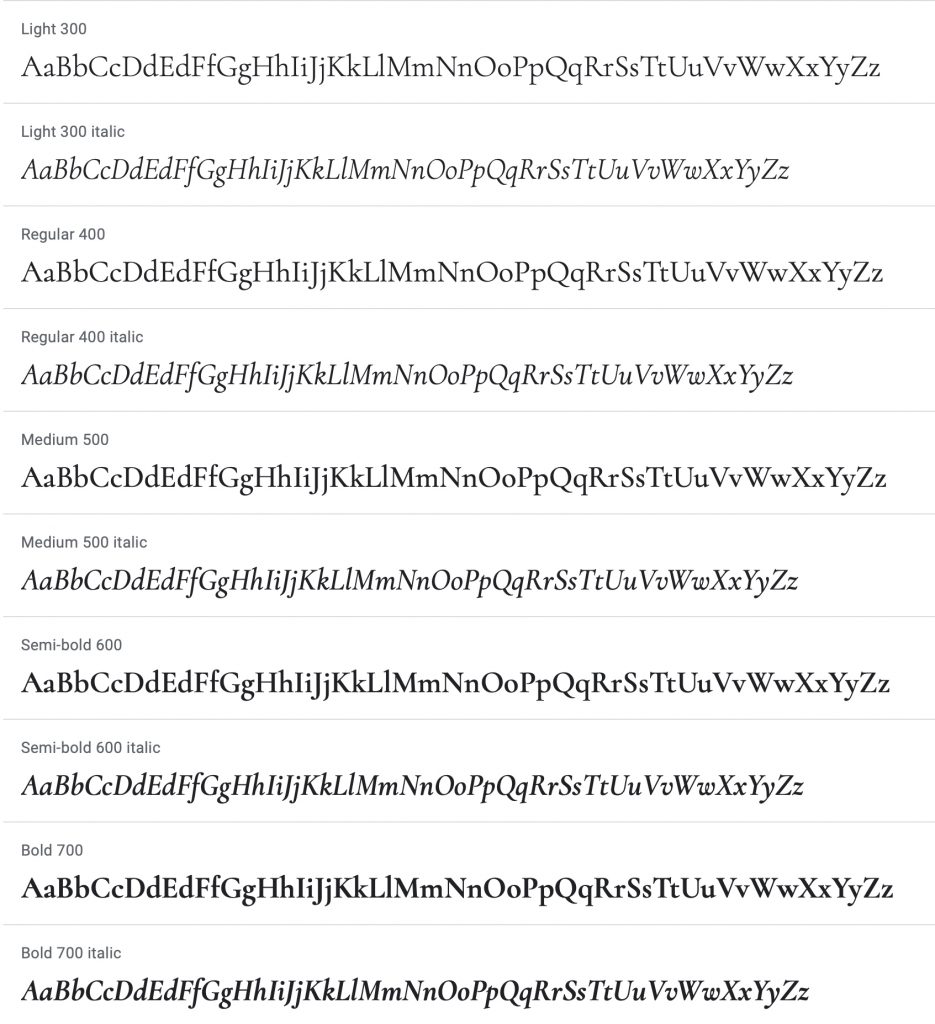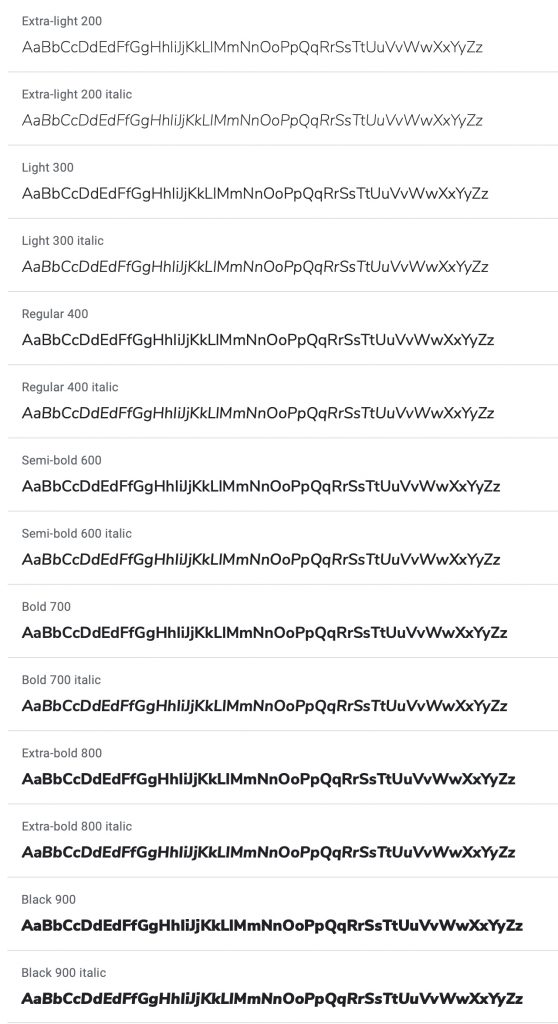Identity Standards Guidelines
Primary Palette
The primary colors for Wake Forest University are Wake Forest Gold and black. These are the traditional colors of our University and evoke a rich heritage that has been part of Wake Forest from the beginning.

Wake Forest Gold suggests prestige and nobility, qualities that reflect the stature of our institution. Yet it is also a warm color, indicating the humanity at the heart of our achievements. Wake Forest Gold is generally best when used in judicious amounts rather than as the dominant color in an application.
Black is the color of boldness and strength, reflected in the confidence and courage that characterize the Wake Forest academic culture.
For examples of appropriate use of the Primary Palette, please refer to the Design Examples in the Resources section of this guide.
Always reproduce colors using the formulas specified in this guide. Do not use the standard software translation values when converting PMS colors to CMYK or RGB. Always reproduce the colors in the Primary Palette at 100%; do not screen.
Wake Forest Gold:
PMS 871
CMYK: 35, 45, 92, 12
RGB: 158, 126, 56
HEX: 9E7E38
Black:
CMYK: 0, 0, 0, 100
RGB: 0, 0, 0
HEX: 000000
Web Text Palette
The Wake Forest Gold has been darkened slightly for text on the web to aid in accessibility and should be used on a white background. This is for website visitors with visual disabilities who are more easily able to read text with color contrast ratios of 4.5:1 or greater and is required by the Americans With Disabilities Act. (For more details about our web styles, visit https://styleguide.web.wfu.edu/)
Web Gold:
RGB: 140, 109, 44
HEX: 8c6d2c
Secondary Palette
The secondary colors for Wake Forest University are a warm yellow-gold and dark gray. These colors support our primary colors while offering variety.

Yellow:
PMS 123
CMYK: 0 16 89 0
RGB: 253 195 20
HEX: FDC314
Grey:
PMS Cool Gray 11
CMYK: 44 34 22 77
RGB: 83 86 90
HTML 53565A
Accent Colors
Your dominant colors should be Old Gold and Black. Additional accent colors are permitted, as long as they are not Duke blue, Carolina blue or State red. Accent colors should be used sparingly for applications such as bar charts, emphasizing small amounts of text or distinguishing particular events.
We provide below a palette of accent colors that work well with each other and our primary colors for the convenience of anyone who doesn’t want to choose their own colors.

Blue
PMS: 7706
RGB: 0 101 138
HEX: 00658A
CMYK: 96 22 8 29
Orange
PMS: 157
RGB: 233 156 79
HEX: E99C4F
CMYK: 0 40 71 0
Green
PMS: 334
RGB: 0 146 112
HEX/HTML: 009270
CMYK: 100 0 68 1
Red
PMS: 485
RGB: 215 31 15
HEX: D71F0F
CMYK: 0 95 100 0
Purple
PMS: 7649
RGB: 150 20 116
HEX: 961474
CMYK: 34 100 6 17
Paper Stock
Stationery
The paper stock for all stationery items is Neenah Environment PC100 White. It is a 100-percent post-consumer-waste (PCW), FSC certified paper.
Collateral Materials
Uncoated paper stock is preferred in nearly all applications.
Wake Forest University is committed to environmental responsibility, as reflected in its selection of recycled paper stocks for official University communications. For questions about paper stock usage, contact CER.
PANTONE® and PANTONE MATCHING SYSTEM® (PMS) are the property of Pantone, Inc. The colors shown on this page and throughout this guide have not been evaluated by Pantone, Inc. for accuracy and may not match the PANTONE® Color Standards. For accurate standards, refer to current PANTONE® publications.
Cormorant
The primary serif typeface for Wake Forest University is Cormorant. It is available in five weights (Light, Regular, Medium, Semibold and Bold). It also has variant styles: Garamond, Infant, Upright, Unicase and Small Caps. An elegant, readable font, Cormorant exhibits warmth and balance and is suitable for nearly any use, including cover titles, initial caps, large text, subheads, quotes and body copy. This font is available from Google Fonts, free for use on both Windows- and Macintosh- based computers.

Nunito Sans
The primary sans serif typeface for Wake Forest University is Nunito Sans. It is available in seven weights. It conveys the balance, simplicity and strength of our University. Highly legible and nuanced, Nunito has a harmonious and sensible appearance in text and is suitable for any size typography. This font is available from Google Fonts, free for use on both Windows- and Macintosh- based computers.

System Fonts
Use system fonts only when Wake Forest University primary serif and sans serif typefaces are not available. Make every effort to acquire Cormorant and Nunito Sans, however.
Garamond
Use Garamond as the serif typeface when Cormorant is not available.
Arial
Use Arial as the sans serif typeface when Nunito Sans is not available.
These versatile, legible fonts are used throughout the world and are standard fonts on most computers.
We use more than visuals to communicate the essence of Wake Forest University. The text of our communications should reflect our personality as clearly as our colors and imagery.
Let your messages take on the qualities of our University, both in content and style. For example, Wake Forest is bold and accomplished. Therefore, write with an intentional and purpose-driven voice. Our devotion to service is grounded in our institutional motto, so choose language that reflects our Pro Humanitate values. Our personality is inquisitive, so our messaging should be open-minded. Finally, we are intimate and speak as one person to another. Our tone should never be pretentious, but always warm, natural and engaging.
University Style
As a rule, all marketing materials, brochures, flyers, posters, newsletters, newspapers, alumni publications, Wake Forest Magazine articles, online content and other campus communications should follow The Associated Press Stylebook. All scholarly articles and formal correspondence should follow The Chicago Manual of Style.
AP Style Reference Guide
- In a simple series, omit the serial (or Oxford) comma unless it is needed for clarity. In general, do not insert a comma before “and” or “or” unless omitting the comma confuses the meaning.
- AP Style does not italicize text, including for book titles. (Pro Humanitate is an exception at Wake Forest.)
- Use a single space after a period and a colon.
- Dashes: Use dashes without spaces for number ranges (e.g., 2020-21 academic year, 8:30-9 p.m. or pages 29-50). Use an em dash (the dash is the length of an “m”), not an en dash, to replace commas, parentheses or colons when you need a slightly different effect. An em dash should have a space on either side per AP Style. (e.g., When the Demon Deacons beat the Tar Heels — for the second time this season — Wake Forest fans rolled the Quad.)
- For composition titles (i.e., books, movies, plays, poems, albums, songs, operas, radio and television programs, lectures, speeches and works of art):
- Capitalize each word except articles (a, an, the) and prepositions and conjunctions of three or fewer letters unless one of these words is the first or last word in the title.
- Put the title inside quotation marks. (Exceptions: the Bible, the Quran and other holy books as well as books that are primarily catalogs of reference materials like almanacs, directories, dictionaries, encyclopedias, gazetteers, handbooks and similar publications.)
- Numbers: In general, spell out one through nine and use numerals for 10 and above. (Exceptions: Use numerals for ages, dates and money; use numerals in tables and charts; always spell out numbers that begin a sentence.)
- In headings (like headlines or section headings), capitalize only the first word, proper nouns and the first word after a colon.
- Capitalize formal titles immediately before a name unless set off by commas. Lowercase titles after the name or elsewhere in copy. A formal title is one that denotes scope of authority, professional activity or academic activity. (Examples: He noted that Pope Francis, the current pope, was born in Argentina. The United States president issued a statement. The governor, Roy Cooper, vetoed a bill. The biology professor, Brian Tague, conducted research. In 2005, Professor Brian Tague was head faculty marshal.)
- Other titles (informal) serve primarily as occupational descriptions: astronaut Sally Ride, poet Maya Angelou, peanut farmer Jimmy Carter.
- Use Dr. for the first reference to the name of an individual who is a doctor of medicine, dental surgery, optometry, osteopathic medicine, podiatric medicine or veterinary medicine. Do not use Dr. as a title for someone with a doctor of philosophy (Ph.D.).
- Spell out months unless part of a specific date, then abbreviate only Jan., Feb., Aug., Sept., Oct., Nov. and Dec. Also, spell out the month in month and year references (e.g., January 2019, October 2020).
- For times, use figures for time of day except for noon and midnight and lowercase/add periods to a.m. and p.m., so 1:20 a.m. and 5 o’clock; 1 hour, 28 minutes, 37 seconds; a winning time of 3:24:17 (3 hours, 24 minutes, 17 seconds). Spell out numbers less than 10 standing alone or in modifiers: We’ll arrive in seven minutes. An eight-hour day. A five-minute warning.
- The names of all 50 states should be spelled out in the body of copy both standing alone or with a city. If the state is with a city, insert a comma after the state (e.g., Winston-Salem, North Carolina, is located in the Piedmont Triad region of the state.)
- For academic degrees, capitalize Bachelor of Arts degree, Bachelor of Science, Master of Science, etc., but use lowercase and an apostrophe for bachelor’s degree (preferable to B.A. or B.S.) or master’s degree. Lowercase the major unless it’s a nationality or language. Avoid abbreviations, but if necessary, use Ph.D., J.D., B.A., B.S., M.A., M.S., but MBA.
- Use the % symbol rather than the word, “percent.”
- Do not hyphenate African American, Asian American or other dual heritage terms.
Wake Forest Conventions and AP Style Exceptions:
- Italicize Pro Humanitate (otherwise, do not use italics per AP Style)
- Advisor (spelled with -or in all cases): This deviation reflects the spelling used in higher education
- Office of Wellbeing and wellbeing in all cases (exception to hyphenated spelling in AP Style)
- Capitalize the season when referring to a specific academic term with semester and year (e.g., Spring 2019, Fall 2021). Lowercase spring and fall semesters. Seasons are lowercase per AP Style.
- Benson University Center on first reference; Benson Center acceptable in subsequent mentions)
- Board of Trustees; chair, Board of Trustees; Lifetime Trustee; University Trustee (Trustee acceptable on second reference)
- Apply the conventions shown below for alumni, current students and parents of current students and alumni. For alumni and current students, if degree earned is not B.S. or B.A., specify the degree with these abbreviations: BSB, Ph.D., MA, MS, MAEd, MALS, MFA, LLM, JD, MSL, SJD, MD, MDiv, MMS, MBA, MAM and MSA followed by an apostrophe with the last two digits of graduation year or expected year of graduation. For parents of alumni and current students, the type of degree earned by the child(ren) is not indicated, but if the child has earned (or will earn) multiple degrees, each degree is noted with a separate P and degree year.
- Examples:
Jane Adams (’24)
Ben Adams (MBA ’91, P ’24)
Jennifer Jones (’86, MD ’90)
Elizabeth “Ma” Jones (’61, P ’86, P ’90)
James “Pa” (’59) and Elizabeth “Ma” (’61) Jones (P ’86, P ’90)
Julie Brown (P ’75, P ’78)
Jake Dobbins (’68, JD ’71, P ’95)
Correct apostrophe: ’99
Incorrect single quote: ‘99
- Examples:
- Capitalize these annual campus events: Commencement, Homecoming, Move-in Day, Founders’ Day Convocation, Orientation, Pre-orientation; orientation is lowercase when used in the generic sense.
- Use lowercase for academic departments, except proper nouns: Wake Forest Department of Classical Languages, department of classical languages or classical languages department; Wake Forest Department of English, department of English or English department
- Use first-year student (lowercase with hyphenated compound modifier); avoid using freshman and freshmen
- Campus locations:
- Hearn Plaza (the Quad)
- Manchester Plaza (formerly Magnolia Plaza)
- South Campus
- North Campus
- Davis Residence Hall, Kitchin Residence Hall, etc. (residence halls as a group, not dormitories); acceptable on second reference: Kitchin, Davis, Babcock, etc.
- Wait Chapel; lowercase chapel is acceptable on second reference
- Fresh Food Company or The Pit (acceptable on first reference)
- Old Gold & Black (with ampersand); OGB acceptable on second reference
- The College or Wake Forest College; capitalize College in all references to Wake Forest’s undergraduate school; lowercase college in generic references
- Lowercase president unless immediately preceding name. (e.g., The 14th Wake Forest president issued a statement. Wake Forest President Susan R. Wente delivered the keynote address.)
- University (always capitalize when referring to Wake Forest); lowercase university when used in the generic sense
- Wake Downtown
- Wake Forest Baptist Health (teaching hospital)
- Wake Forest Graduate School of Arts and Sciences, Wake Forest Graduate School or graduate school
- Wake Forest Reynolda Campus or Reynolda Campus
- Wake Forest School of Business, school of business or business school
- Wake Forest School of Divinity, school of divinity or divinity school
- Wake Forest School of Law, school of law or law school
- Wake Forest School of Medicine, school of medicine or medical school
- Wake Forest University or Wake Forest (not Wake or WFU)
Photographs tell the story of Wake Forest to a broad audience, one which expects our photographs to present a true and complete picture of the university.

When using photographs in any Wake Forest publication, print or electronic, please abide by the following:
Representation
Take care to ensure that the photograph appropriately illustrates the point being made in your publication.
- Read the original caption for information about the contents of the photograph. Captions may be viewed in any picture editing application.
- Do not claim or imply something that does not exist in the original.
- Please do not use students from one school or college to promote another.
- Be particularly careful with regard to financial aid, scholarship, and diversity issues.

Manipulation
Do not manipulate photographs in any way that changes or misrepresents their original meaning and content. Changes that improve the technical quality of the image are acceptable.
Unacceptable:
- Combining two or more photographs into an image that might be mistaken for an original photograph.
- Adding or removing people or objects from a photograph.
- Representing a set-up photograph as a “found” moment.
- Extreme cropping that changes the meaning or content of the photo.
Acceptable:
- Tonal and color corrections intended to improve the accuracy of the photograph in publication.
- Local exposure and contrast changes (burning and dodging).
- Routine cropping that does not change the meaning or content of the photo.
Usage and Permission
The University Photographer does not routinely obtain signed written model releases. Photographs of Wake Forest students, faculty, and staff taken in public areas may be published in a news or editorial context. Reuse in a marketing or advertising context requires more care. It’s often a good idea to email the subject(s) of the photograph and ask permission before using a photo in a marketing or commercial context. (Names of subjects, when available, are in the caption.)
